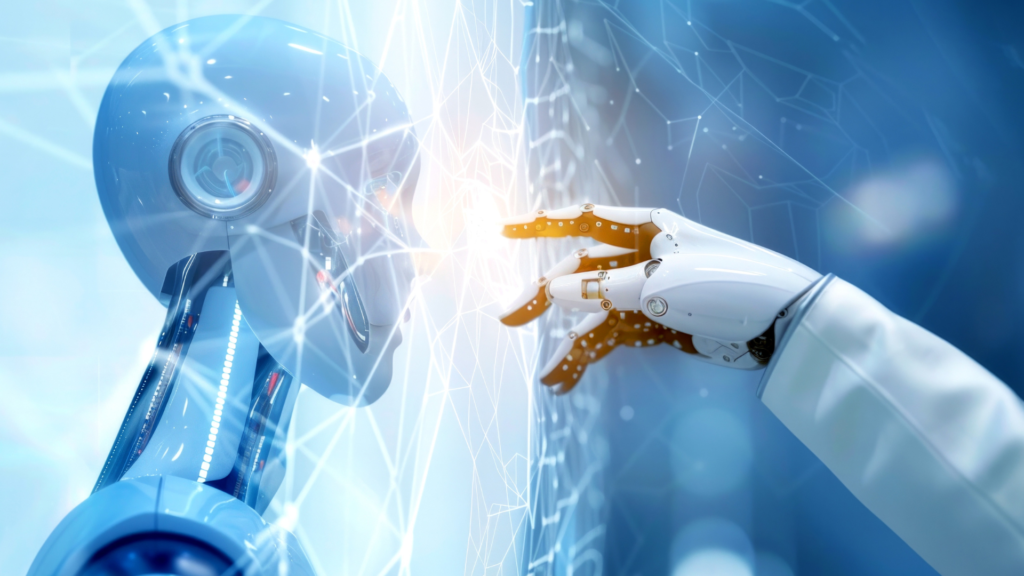AI and Creativity: Can Machines Truly Innovate?

AI and creativity—two seemingly distant worlds—are now colliding in ways that were once unimaginable. From AI-generated artwork to algorithmically composed music, machines are entering spaces once ruled solely by human imagination. This convergence has sparked intense curiosity: can a machine truly innovate, or is it simply reflecting what we already know?
Mimicry or Meaningful Creation?
The creative output of AI often appears impressive, even moving. A poem might sound poetic, a painting might look beautiful, a melody might feel soulful. But the machine behind these creations doesn’t feel. It doesn’t dream, long, or reflect. It processes—based on data. What might appear as emotion is just prediction. Words, colors, and sounds are arranged according to learned patterns—not inspired vision. That’s the crux: is AI simply mimicking the human creative process, or can it break beyond imitation?
When AI Becomes a Creative Partner
Despite its lack of feeling, AI proves useful as a collaborator. Many creatives are turning to AI tools to boost their work rather than replace it. An artist may use AI to explore new visual styles. A filmmaker might use it to storyboard or generate scripts. In these settings, Artificial Intelligence serves as a tool for speed, scale, and inspiration. It doesn’t replace the creative mind—it expands it. The synergy of human intent and machine capability can lead to surprising and meaningful outcomes.
Innovation Still Belongs to the Human Mind
True innovation involves more than novelty—it involves risk, insight, and sometimes rebellion. It’s not just about combining old ideas into new forms, but challenging norms and offering perspectives shaped by experience. Machines cannot rebel against rules they don’t understand. They follow data and probabilities, not instinct or desire. AI lacks the purpose and motivation that often drive transformative human ideas.
A Mirror, Not a Mind
In many ways, AI functions as a mirror—it reflects human ideas, biases, and culture. It can remix and rearrange what it has been taught but doesn’t originate thought from experience or self-awareness. When an AI creates, it’s drawing from billions of human examples—everything it knows is something someone else once made. It can surprise us, but it cannot surprise itself. And that distinction defines the difference between generation and genuine invention.
The Future of Co-Creation
Rather than replacing human artists, the future may lie in co-creation—where machines assist, enhance, and inspire. AI can generate thousands of visual iterations, compose background scores, suggest story arcs, or adapt design trends in real-time. These capabilities free up time for humans to do what AI cannot: inject emotion, context, and purpose. When used wisely, AI can sharpen the tools of human creativity rather than dull them.
Machines Can Assist, But Not Feel
So, can machines truly innovate? The answer depends on how we define innovation. If it means producing something statistically new, then yes—AI can innovate. But if it means creating from a place of consciousness, emotion, and intent, then that remains beyond its reach. What AI offers is powerful simulation, not authentic sensation. It mirrors brilliance, but does not originate it. And perhaps that’s where its value lies—not in replacing creativity, but in expanding the horizon for those who create.
Frequently Asked Questions (FAQs)
1: What does AI-generated creativity actually involve?
A: AI-generated creativity involves the use of algorithms and machine learning models to produce content that mimics human-created work. These models analyze vast datasets—such as text, images, or music—and generate new outputs based on patterns they’ve learned. While the content may appear original, it is typically a recombination of existing ideas without emotional depth or intentional meaning.
2: How are creative professionals using AI tools in real-world projects?
A: Creative professionals are increasingly using AI to streamline and enhance their workflows. Writers use AI for brainstorming and drafting, designers rely on AI for layout suggestions and color palette generation, and musicians explore AI tools for composing backing tracks. These tools are not replacing human creativity but assisting with speed, variation, and ideation.
3: Why can’t AI truly replicate human innovation?
A: True human innovation stems from personal experience, emotional insight, cultural context, and the ability to challenge norms. AI lacks consciousness, intuition, and the ability to feel or reflect. Its outputs are based on statistical predictions rather than genuine understanding, which limits its ability to produce deeply meaningful or disruptive innovations.
4: What ethical concerns arise from using AI in creative fields?
A: Ethical concerns include copyright issues, authorship ambiguity, transparency in AI-generated work, and the potential devaluation of human creativity. There’s also debate over whether audiences should be informed when content is AI-generated and who holds the rights to such creations—the developer, the user, or both.
5: Can AI-generated content still hold artistic or commercial value?
A: Yes, AI-generated content can hold both artistic and commercial value, especially when used in collaboration with human creators. Businesses use AI to generate marketing visuals, personalized ads, or scalable content. Artists use it as a tool for inspiration. The value lies not in whether AI “feels” but in how effectively the output resonates with human audiences.



Pingback: Designing Transparent and Ethical AI Systems for a Responsible Future